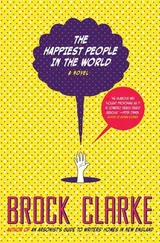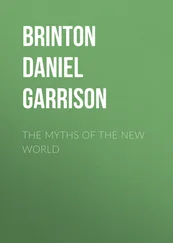The stock room felt like an ersatz version of big-C Communism: identical piles of boxes, stacked high, all bearing the farm logo; a colour-coded livery of plenty. Before it’s bottled, the olive oil is stored in giant cylindrical silos, and even there the Marinaleda aesthetic is evident: the floor is green, the walls are white, the measuring sticks on the side of each silo are red. Outside, the factory walls themselves, and even the little pavement around the edge of the building are painted in the tricolour: the ubiquity of the colour scheme makes the farm and the oil factory feel like a sports stadium complex – indeed, it makes fidelity to the village, and the project, feel like supporting a football team.
Antonio Sánchez actually looked like a character from Asterix – tall, broad and fit despite his advancing years, with a big bushy moustache. At times it feels like every third person in Marinaleda is called Antonio, and so he is known as El Bigotes , ‘the whiskers’. He has worked in the oil factory for all of its twelve years in existence, and before that was a town hall employee for twenty years – ever since the struggle began in 1979. He’s been close to Sánchez Gordillo since the beginning. He briefly lived in Cordoba in the 1970s, migrating to the city for work like so many others, but returned when the struggle began.
Those first few years, Antonio recalled with a big grin that disturbed his moustache, were a red-hot period, a boiling point. Diving back into those formative memories, he transmitted a similar excitement to that I’ve seen on the faces of young members of Spain’s indignados : the intense thrill that comes from determinedly standing together against the status quo and announcing you are going to make something new. The ineffable, irrepressible subjectivity of solidarity.
We talked about the land seizures, the hunger strikes, the arrests, the tireless years of struggle which at last earned them the farmland that stretched beyond our view for miles. This was a struggle that brought not just work to the people of Marinaleda, but life to 1,200 hectares (close to five square miles) of idle fields. Antonio seemed quite pleased to talk about the old days; unlike Sánchez Gordillo, his job does not regularly involve recounting tales of yesteryear, certainly not to foreign journalists. It was never as simple as just one occupation, he explained; in fact they had to occupy these very fields over and over again – the marinaleños would be arrested, sometimes imprisoned or beaten, and then they’d regroup and start over again.
‘The Guardia Civil would be here, defending the Duke. Look at the trees,’ he gestured, his arm casting a long shadow beneath the low-lying winter sun. There was a line of leafless, sorry-looking trees lining the path from the main road into El Humoso, which appeared to have been not so much pruned as amputated. ‘When we first came here to protest it was the summer, and very, very hot. The Guardia Civil cut the tree branches off, so we would have no shelter.’ With normal summer temperatures around forty degrees, removing the only natural source of shade in sight is evil genius worthy of a cartoon villain. He shook his head; the memory still burned through. ‘They wanted us to give up and go home.’
In those early days, to work on ‘the project’ together, trying to create utopia from scratch after decades of dictatorship and centuries of poverty, was the only option. It was, the veterans say now, necessary just to survive. For all that la lucha was bred out of misery and hopelessness, it fired their synapses, it was thrilling – a release of that unique kind of energy you can only get from knowing you are fighting for a just cause. And that maybe – just maybe – you might win.
Before tracing la lucha itself, it’s worth recapitulating the historical background: the Spanish left had had a democracy – even a revolution, perhaps – snatched away from them. In 1931’s general election, left-wing parties of all varieties thrived, the monarchy was banished, and on 14 April that year, the Spanish Second Republic was declared. But in rural areas this was a victory without gains – it did not in itself herald a new era of the one thing that could stabilise rural Spain and feed its people: agrarian reform, and land redistribution.
The prospect of land and freedom suddenly appeared tantalisingly close, and yet the reality was still sorely lacking. As a result, rural Spain witnessed intense, frequent peasant mobilisations, land seizures, clashes and strikes. In Gilena, a pueblo ten miles from Marinaleda and about the same size, there had been no voting, because the socialists had been barred from standing by a corrupt cacique who was also a landowner. Increasingly disgruntled as the summer wore on, in October 1931 the infamous Gilena Events took place. What began with a general strike quickly degenerated into confusion, a heavy-handed response, stand-offs, a stolen gun, rapid escalations on both sides: the upshot was one dead Guardia, five dead workers, and fifty injured.
It was not the only such tragedy, or even the worst. Casas Viejas was yet another Andalusian pueblo the size of Marinaleda, with the same composition of desperate, landless labourers, further inflamed by their new anarchist faith. In January 1933 there were anarchist uprisings in Barcelona, Madrid and Valencia, which were quickly suppressed, but news of their failure did not reach Casas Viejas in time. Believing the revolution had finally arrived, armed workers surrounded the local Guardia Civil barracks; there was an exchange of fire, and two of the guards were killed. Reinforcements were sent in, the village was occupied, and a massacre ensued. The beatings, reprisals, and a siege-via-fire resulted in a total of twenty-eight deaths over the following forty-eight hours.
As with Gilena, the tragic events of Casas Viejas prompted soul-searching and recriminations on a national scale – but while they were shocking, they were neither isolated nor, in retrospect, surprising. There were 238 strikes in Seville province between the declaration of the Second Republic in 1931 and the outbreak of the Civil War with Franco’s coup in 1936. The anarchist trade union, the CNT, called their actions in this period ‘revolutionary gymnastics’. And like all gymnastics, the flexibility, strength and spontaneity of the workers’ uprisings were only possible thanks to long periods of training.
The promise of the pre-Civil War period dissolved in the relentless horrors of the conflict itself and the brutal vengeance of Franco’s White Terror that followed the fascist victory in 1939. It was a revolution not only delayed, but, by necessity, forgotten. The rallying cry of agrarian reform, the only solution to the volatility, hunger and misery of life for the landless labourers of Andalusia, went unheeded. After the Civil War, and for the best part of four decades of fascist dictatorship, the land surrounding the impoverished pueblos remained as it always had been, in the hands of the aristocratic houses of Infantado and Alba.
By the time Franco died, during a period in which most of their European counterparts were enjoying the fruits of technological, social and cultural progress, the jornaleros of Andalusia could reasonably consider their lot and observe that it had barely improved in almost 200 years.
Franco died in November 1975, at the age of eighty-two; his funeral was attended by such luminaries as General Pinochet and the Bolivian dictator Hugo Banzer. Spain breathed a long-overdue sigh of relief and embarked upon la Transición , awkwardly loosening the chains of dictatorship. The words of the Franco-era Spanish national anthem, La Marcha Real , full of the patriotic bombast that characterises most national anthems, were removed in 1978. As a mark of the tense uncertainty of the period, nothing was put in their place – indeed, to this day, Spain’s national anthem is one of only two wordless anthems in the world.
Читать дальше












